Baking Soda For Acne: 8 DIY Home Remedies For Clear Skin
Safe and effective ways to include this unassuming ingredient in your skincare regimen.

Image: iStock
We all resort to home remedies and quick fixes to treat occasional breakouts. Baking soda for acne is one of them. It is probably the most common DIY hack to zap the zits. While there is no scientific evidence to prove the efficacy of baking soda for acne, you will find plenty of anecdotal evidence supporting this hack. Baking soda can be harsh on the skin, so you must be extremely careful before trying this hack. It can dry out your skin and irritate it. However, there are safe ways to use baking soda for acne. Scroll down to learn how baking soda may affect your skin and safe ways to use it for acne.

In This Article
Can You Use Baking Soda For Acne? Is It Effective?
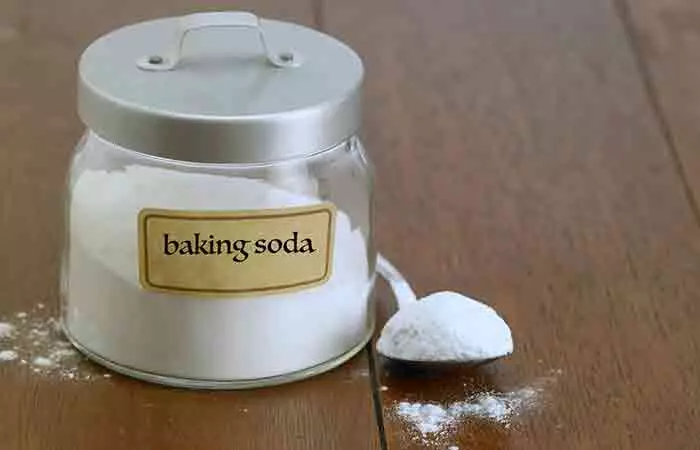
Anecdotal evidence claims that baking soda is a natural remedy effective for acne. Some suggest that it aids acne treatment by acting as a facial cleanser and, when used regularly, may help with oil control. However, there hasn’t been any research to evaluate whether baking soda works for acne or not. The U.S. Food and Drug Administration has not approved this popular home remedy for acne. The advocates of this popular home remedy believe that baking soda may help in minimizing your acne, depending on your skin type.
 Did You Know?
Did You Know?It is claimed that baking soda has a drying effect on the skin, and this property helps shrink the zit and reduce inflammation. It is also said to help in the following ways:
- Baking soda has anti-inflammatory properties that help soothe swelling and redness. It not only helps calm flare-ups, but also soothes rashes, irritation, and sunburn.
- Baking soda is a great ingredient for physical exfoliation. It has fine particles that dislodge dirt and dead skin cells from your pores. It also causes relatively less irritation than most chemical exfoliants while being more efficient.
- It not only helps fight and prevent acne but also minimizes the appearance of acne scars and pigmentation.
- It helps absorb the excess oil from your skin. This, in turn, dries out pimples and blemishes, helping them heal faster.
If you have oily or extremely oily and acne-prone skin, you may try using baking soda. However, there is no scientific research that proves that baking soda is good for acne or your skin, so you need to be very careful while using this ingredient. Baking soda can cause severe discomfort if it does not suit your skin or if you overuse it. Check them out in the next section.
Key Takeaways
- Baking soda can aid in oil removal, pore cleaning, and skin exfoliation.
- Combine baking soda and water, and apply this paste to acne-prone regions.
- For improved acne treatment results, you can mix baking soda with other substances like honey or lemon juice.
- Remember that baking soda can be abrasive on the skin. Using it too frequently might cause dryness and irritation.
- Before using baking soda on your entire face, perform a patch test on a tiny area.
Are There Any Side Effects Of Using Baking Soda For Acne?
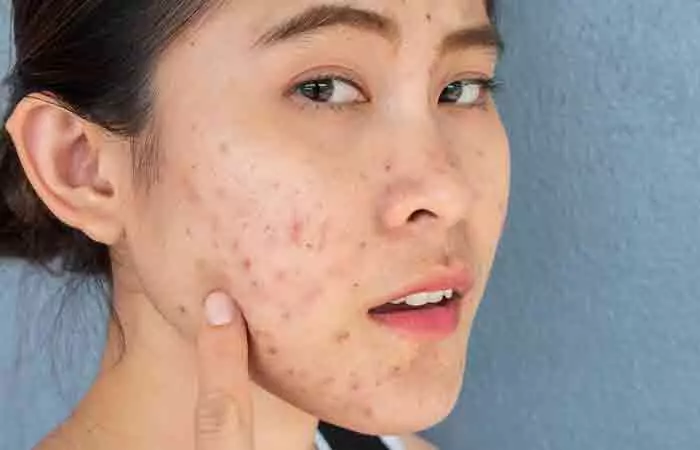
Using baking soda for skin is a common practice. However, excessive use of baking soda might damage your skin. If you use it too frequently or if it does not suit your skin, the following side effects may occur:
- It might damage the protective barrier of your skin and worsen your acne. This is because the pH of your skin is slightly on the acidic side (which is crucial for maintaining a balance). When you apply baking soda, it removes the acidic protective barrier and leaves it vulnerable to breakouts and bacteria.
- It can cause skin irritation. Baking soda has a drying effect, and if you use it on your skin (or use it too frequently), it may irritate the skin and cause redness, breakouts, rashes, and burning sensation.
- It might overdry your skin and cause inflammation.
The average natural pH of the skin (without showering and using any cosmetic products) is 4.7. It usually ranges between 4.5 and 5.5. On the pH scale, anything below 7 is acidic and anything above 7 is alkaline. While our skin is acidic, baking soda has a pH of 9, which is alkaline. When you apply an alkaline ingredient to your skin, it naturally strips away its natural oils, leaving it exposed to UV rays, bacteria, and environmental damage.
Although it is not recommended, you can try a few baking soda recipes to control inflammation. Make sure that you only use the recommended amount of baking and do not exceed that. Also, do not follow any of these recipes more than once a week.
 Did You Know?
Did You Know?How To Use Baking Soda For Acne
Sinéad shared her experience with a commercial face mask in her blog. She writes, “A minute after I put it onto my skin, it began to really burn, and I had to wash it off straight away.” This incident reinforced her commitment to homemade and natural skincare and avoiding harsh chemicals. “…I much prefer to partake in a more creative, simple and natural skincare regime at home!” Sinéad’s DIY mask with baking soda has benefits like oil reduction, fighting blackheads, and acting as a mild exfoliant. She encourages others to try the baking soda mask for its simplicity and effectiveness and offers an additional tip, “I like to sweep apple cider vinegar diluted with water over my face after I rinse off the mask, as this ensures the optimum PH level for your complexion (i).”
Nicole Rae, a blogger, shared her success with a baking soda face mask, stating, “Do you fight with having acne scaring? I sure do! I used this face mask today and i already noticed a difference (ii)!” Additionally, she suggests following up the mask with a moisturizer.
1. Baking Soda And Lemon
You Will Need
- 2 tablespoons baking soda
- 2 tablespoons water
- 1 teaspoon lemon juice
Method
- Mix baking soda, water, and lemon juice in a bowl. Make a smooth paste.
- Apply a thin layer of the paste on your face and leave it on for 15 minutes or until it dries.
- Wash your face with cold water.
- Follow up with a moisturizer or skin serum.
- Use this face mask twice a week.
Why This Works
Lemon juice helps control oil production in your skin while shrinking your pores with the help of its astringent properties (1). It also has antimicrobiali Substances that help fight microorganisms like bacteria and mold and prevent them from spreading disease. properties that may help kill acne-causing bacteria (2).
Caution: Lemon juice (and most citrus fruit juices) can make your skin sensitive to sunlight, which may result in sunburns. Hence, make sure to apply sunscreen before you step out. Check out more tips to prepare lemon baking soda mask for all skin types.
2. Baking Soda And Water
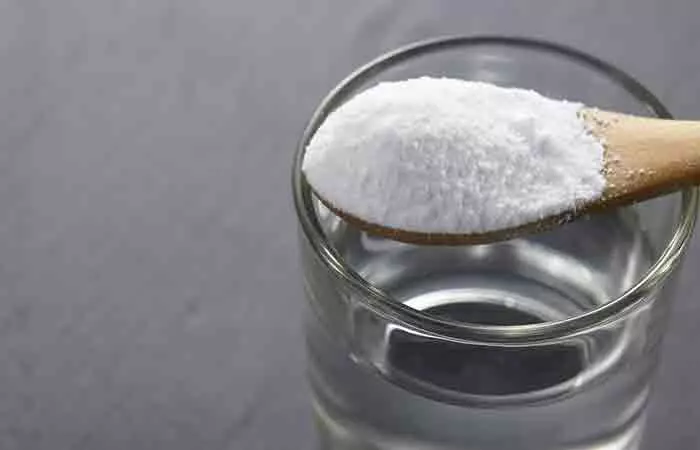
You Will Need
- 2 tablespoons baking soda
- 1-2 tablespoons water (adjust the quantity)
Method
- Mix baking soda and water. Adjust the quantity of water to make a smooth paste.
- Apply the paste only on the affected areas. Leave it on for 10-15 minutes and then wash with cold water.
- Follow up with a moisturizer. Do this twice a week.
Why This Works
Baking soda removes the accumulated dirt and dead skin cells from the pores.
It is also said to dry up the pimples, shrinking them and allowing them to heal faster. This may also help with pimple prevention, blackhead removal, and whitehead removal.
3. Baking Soda And Apple Cider Vinegar
You Will Need
- 1 tablespoon baking soda
- 1 tablespoon water
- 1 tablespoon apple cider vinegar
Method
- Dilute the apple cider vinegar with water.
- Add baking soda to the ACV-water mixture.
- Apply the paste on the affected areas (like spot treatment). Leave it on for 10-15 minutes.
- Wash with cold water.
- Apply moisturizer.
- Do this twice a week.
Why This Works
Using apple cider vinegar for acne can be quite effective (3). It contains lactic acid that helps speed up cell turnover and thus, control acne. It is also said to help maintain the pH balance, keeping the baking soda from making your skin too alkaline.
4. Baking Soda And Honey
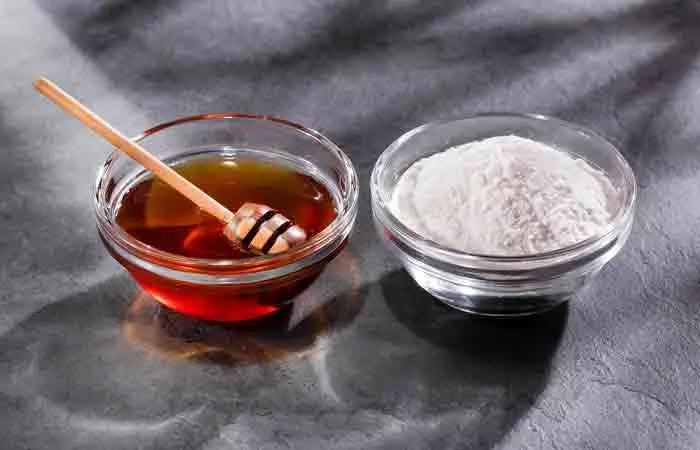
You Will Need
- 1 tablespoon organic honey
- 1 tablespoon baking soda
- Washcloth
- Warm water
Method
- Mix baking soda and honey in a bowl.
- Apply the paste all over your face or just on the affected area.
- Dip the washcloth in warm water and wring it. Place it on your face and wait for 5 minutes.
- Once the washcloth has cooled down, wipe the mask with it.
- Wash your face with cold water and apply moisturizer.
- Repeat this 2-3 times a week.
Why This Works
Honey is a humectant that binds moisture to your skin (4). This mask may help prevent acne and give you clear skin.
5. Baking Soda And Aloe Vera
You Will Need
- 1 teaspoon baking soda
- 1 teaspoon aloe vera gel
Method
- Mix both the ingredients and make a paste.
- Use your fingers to apply the mixture on the affected area. Leave it to dry for 15-20 minutes.
- Wash your face with cold water.
- Follow up with a moisturizer.
- Repeat this treatment 2-3 times a week.
Why This Works
Aloe vera has anti-inflammatoryi Substances that help reduce inflammation, including redness, swelling, and pain. and antimicrobial properties (5). This mixture reduces redness and inflammation and helps in fast healing of acne.
6. Baking Soda And Witch Hazel
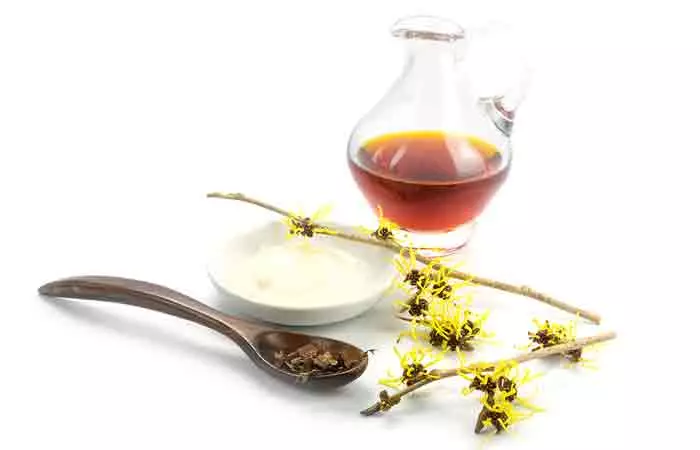
You Will Need
- 1 teaspoon baking soda
- A few drops of witch hazel (adjust the quantity as per need)A Q-tip
Method
- Mix the baking soda and witch hazel in a bowl.
- Use the Q-tip to apply the paste on the affected area (just as tiny dots on the acne). Leave it on for 10-15 minutes and then wash your face with lukewarm water.
- Follow it up with a moisturizer.
- Repeat this remedy 2-3 times a week.
Why This Works
Witch hazel is a natural astringenti An ingredient applied to skin to reduce bleeding from minor abrasions and/or to reduce skin oiliness. that unclogs your skin pores and tightens them. It also has an anti-inflammatory effect on your skin (5). Thus, it can help reduce the redness and irritation caused by acne.
7. Baking Soda, Yogurt, And Lemon
You Will Need
- ½ teaspoon baking soda
- 1 teaspoon yogurt
- 1 drop lemon juice or lemon essential oil
Method
- Mix all the ingredients to prepare a creamy paste-like mixture.
- Apply it on the affected areas and leave it on for 5-10 minutes.
- Rinse your face with lukewarm water and pat it dry.
- Follow up with a face serum or moisturizer.
Why This Works
Lemon, along with baking soda, helps shrink the skin pores and unclog them. Lemon contains vitamin C, which has antioxidant properties and may prevent signs of aging. Yogurt helps keep your skin moisturized (6).
Note: If you have highly sensitive skin, dilute the lemon juice with water before using it to avoid allergies.
8. Baking Soda And Aspirin (For Spot Treatment)
You Will Need
- 1 teaspoon baking soda
- 2 aspirin tablets (crushed)
- Water (as per requirement)
- A cotton swab or Q-tip
Method
- Combine the baking soda and aspirin tablets in a bowl and mix them with water.
- Use the cotton swab or the Q-tip to apply the paste to the affected area as spot treatment. Leave it on for 15 minutes.
- Wash with lukewarm water.
- Pat your skin dry and apply a moisturizer.
Why This Works
Although no study shows that topical treatments with aspirin could heal acne, it may help reduce inflammation (7). Aspirin contains salicylic acid (which is excellent for acne) and may help reduce breakouts (8).
A few other natural ingredients suggested to help manage acne along with baking soda are turmeric, cinnamon, coconut oil, and tea tree oil. You can also consult a dermatologist to check if benzoyl peroxide can be used to reduce acne spots.
Explore the potential risks and benefits of using baking soda on your face in this informative video. Gain expert insights and make informed decisions about your skincare routine.
Infographic: 5 Ways To Use Baking Soda For Acne
Baking soda is a kitchen staple that has anti-inflammatory and antiseptic properties. It offers gentle exfoliation, aids in oil control, soothes inflamed skin, and reduces acne scars. Check out the infographic below for easy ways to use baking soda to manage acne.

Illustration: StyleCraze Design Team
Baking soda is one of the most common home remedies to fight occasional breakouts. However, it can be harsh on your skin. Therefore, while using baking soda for acne, ensure that you are not overdoing the application and use it only for mild or moderate breakouts. You may follow the DIY recipes discussed in the article, but do a patch test to avoid the risk of irritation.
Even though people use baking soda for acne, it cannot replace standard medical treatment for acne. If you have severe acne, consult a doctor and follow the prescribed treatment instead of trying home remedies.
If you are using baking soda for acne treatment, make sure that you limit your skin’s exposure to this substance. If you have any more questions, feel free to post them in the comments section below.
Frequently Asked Questions
Is baking soda good for acne scars?
According to anecdotal evidence, it seems that baking soda might help reduce their appearance, but there is no scientific proof to back this up.
Can you leave baking soda on your face overnight?
Absolutely not! It will damage the skin.
Is it safe to use baking soda on the face every day?
Not really. If you do, it will damage the skin’s protective barrier.
How long does it take for baking soda to remove acne?
It may take a day or two to reduce the swelling and inflammation. The acne may dry out initially and will eventually heal.
How do you make baking soda paste for the skin?
Mix a teaspoon of baking soda with warm water to prepare a paste. You may also follow the remedies mentioned above to make a baking soda paste.
Is baking soda safe goof for sensitive skin?
Baking soda can be harsh on sensitive skin because of its high pH, which may cause irritation or dryness. It’s best to do a patch test first or choose gentler skincare alternatives.
Illustration: Baking Soda For Acne: Effectiveness, How To Use It, And Risks
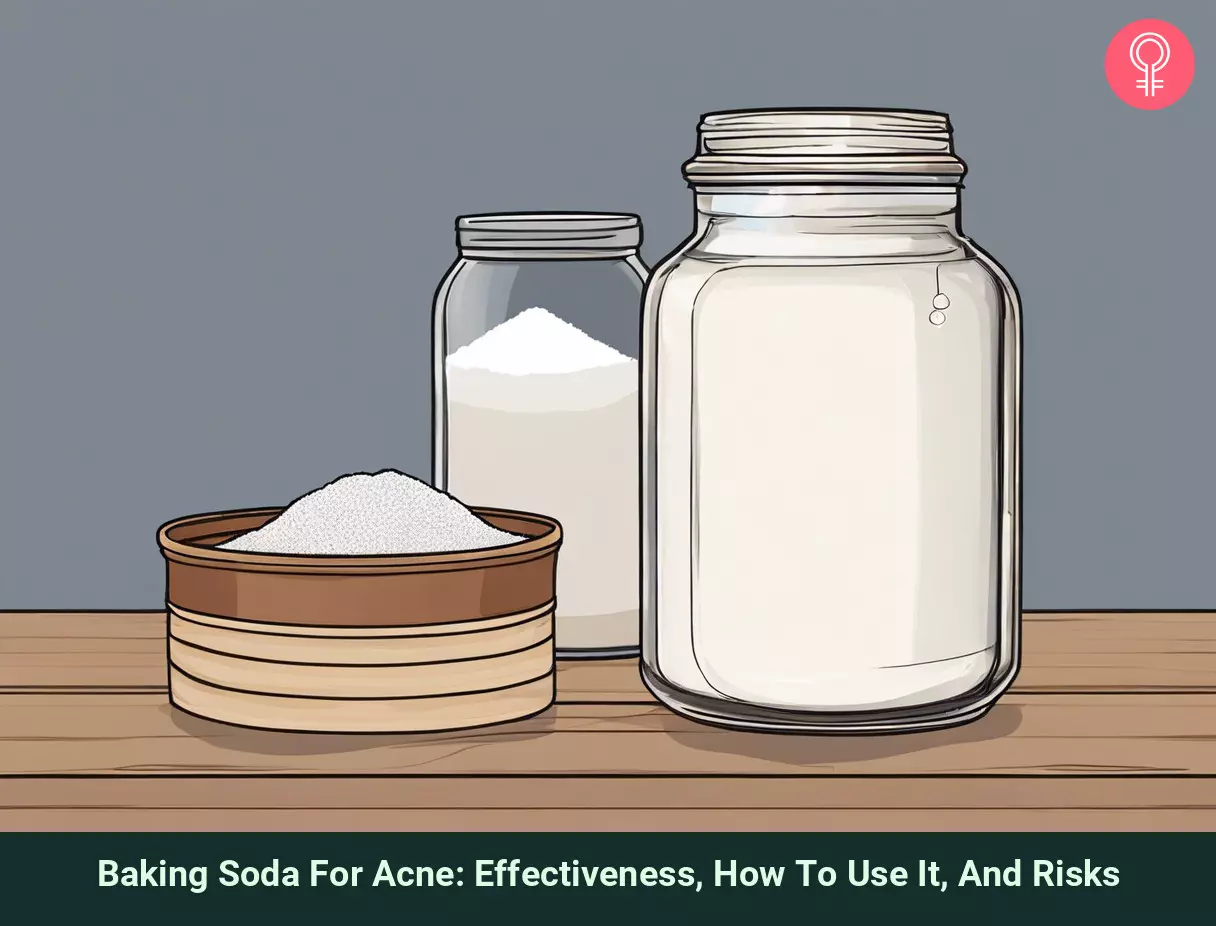
Image: Stable Diffusion/StyleCraze Design Team
Personal Experience: Source
StyleCraze's articles are interwoven with authentic personal narratives that provide depth and resonance to our content. Below are the sources of the personal accounts referenced in this article.
i. Baking Soda Face Maskhttps://skindividualblog.wordpress.com/2015/01/05/baking-soda-face-mask/
ii. DIY: 5 ways to use baking soda.
https://nicoleraexo.wordpress.com/2013/06/09/diy-5-ways-to-use-baking-soda/
References
Articles on StyleCraze are backed by verified information from peer-reviewed and academic research papers, reputed organizations, research institutions, and medical associations to ensure accuracy and relevance. Read our editorial policy to learn more.
- Development of a lemon cutting machine, Journal of Food Science and Technology, U.S. National Library of Medicine, National Institutes of Health.
https://www.ncbi.nlm.nih.gov/pmc/articles/PMC4252431/ - Phytochemical, antimicrobial, and antioxidant activities of different citrus juice concentrates, Food Science & Nutrition, U.S. National Library of Medicine, National Institutes of Health.
https://www.ncbi.nlm.nih.gov/pmc/articles/PMC4708628/ - Long term topical application of lactic acid/lactate lotion as a preventive treatment for acne vulgaris., Indian Journal of Dermatology, Venereology and Leprology, U.S. National Library of Medicine., National Institutes of Health.
https://pubmed.ncbi.nlm.nih.gov/17656910/ - Honey in dermatology and skin care: a review., Journal of Cosmetic Dermatology, U.S. National Library of Medicine, National Institutes of Health.
https://pubmed.ncbi.nlm.nih.gov/24305429/ - Moisturizers for Acne, The Journal of Clinical and Aesthetic Dermatology, U.S. National Library of Medicine., National Institutes of Health.
https://www.ncbi.nlm.nih.gov/pmc/articles/PMC4025519/ - Clinical efficacy of facial masks containing yoghurt and Opuntia humifusa Raf. (F-YOP), Journal of Cosmetic Science, U.S. National Library of Medicine, National Institutes of Health.
https://pubmed.ncbi.nlm.nih.gov/22152494/ - Topically applied aspirin decreases histamine-induced wheal and flare reactions in normal and SLS-inflamed skin, but does not decrease itch. A randomized, double-blind and placebo-controlled human study, Acta Dermato-venereologica, U.S. National Library of Medicine, National Institutes of Health.
https://pubmed.ncbi.nlm.nih.gov/12013195/ - Treatment of acne vulgaris with salicylic acid pads, Clinical Therapeutics, U.S. National Library of Medicine, National Institutes of Health.
https://pubmed.ncbi.nlm.nih.gov/1535287/
Read full bio of Dr. Vindhya L Veerula
Read full bio of Ramona Sinha
Read full bio of Eshna Das
Read full bio of Krati Darak








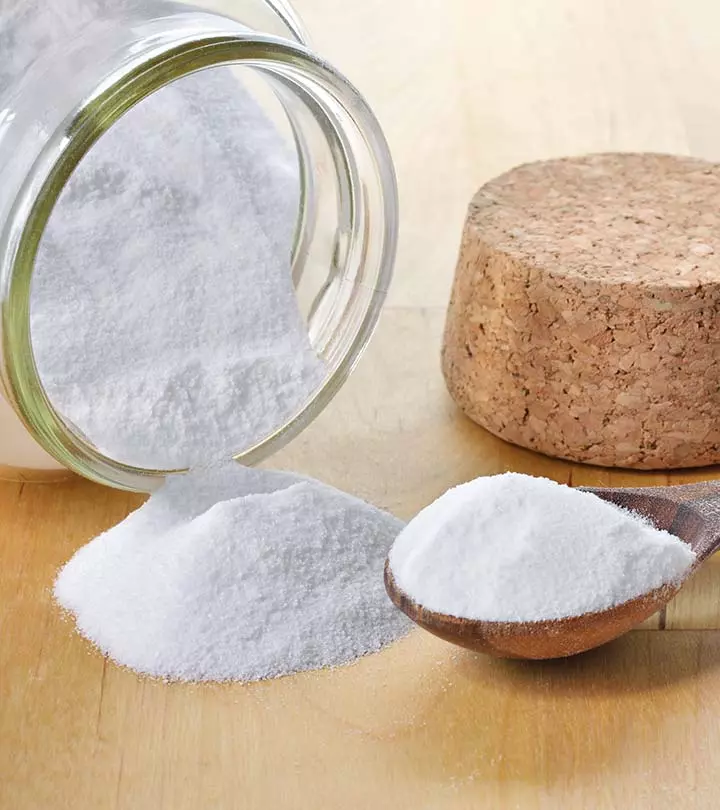

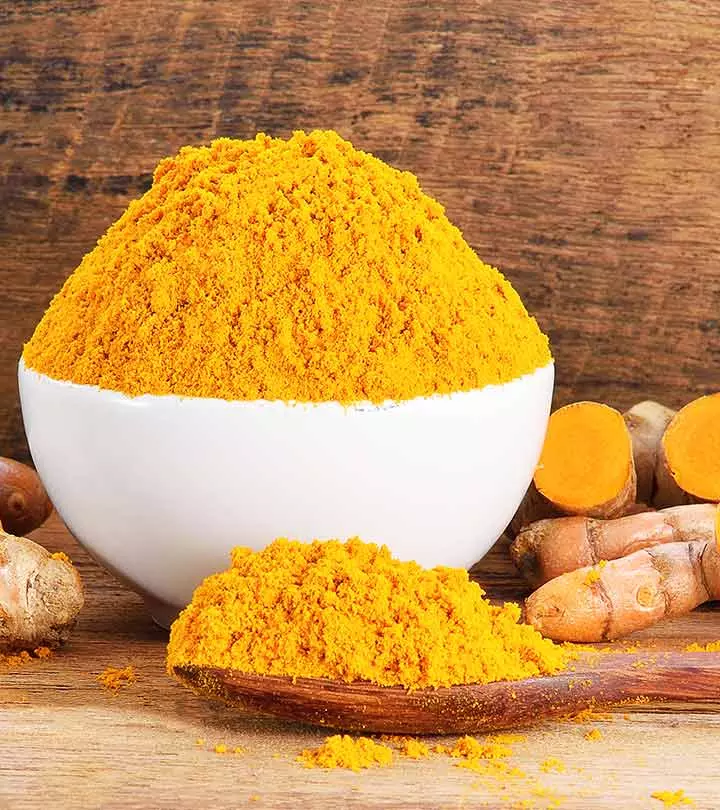
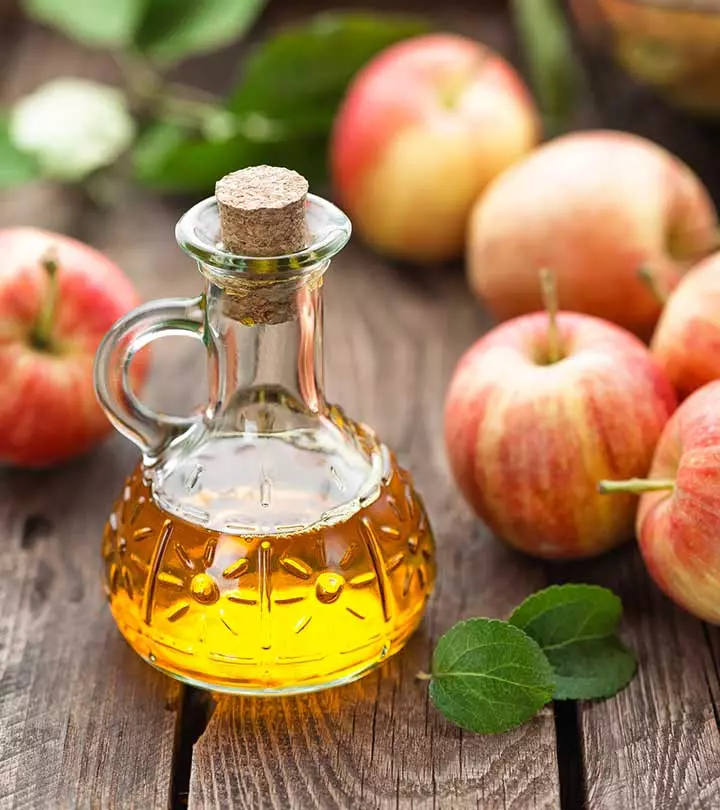
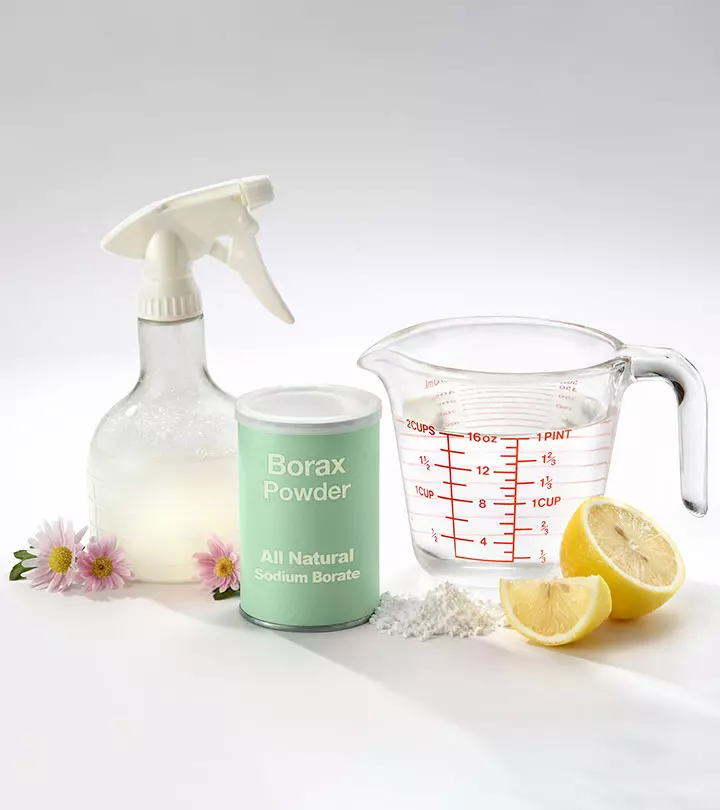
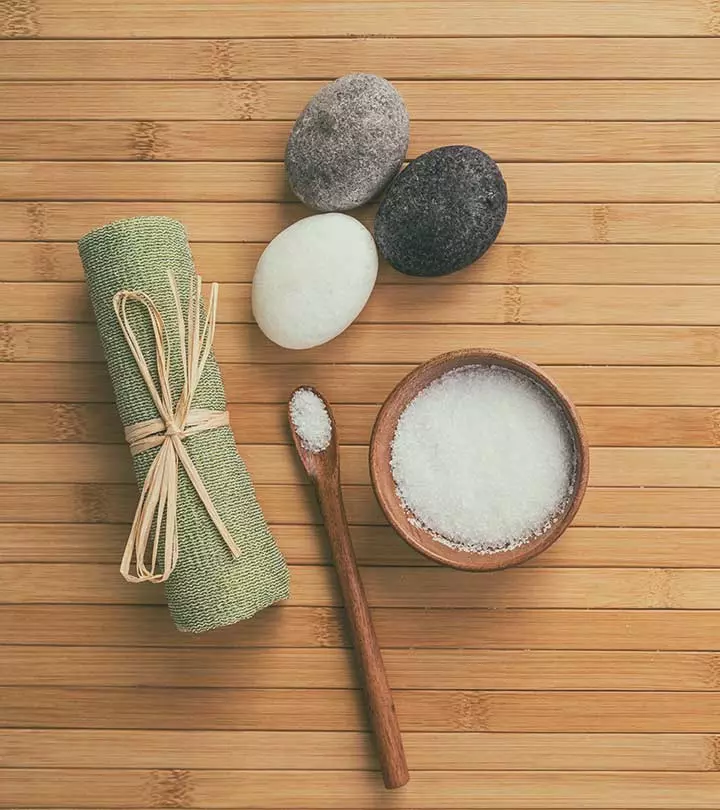
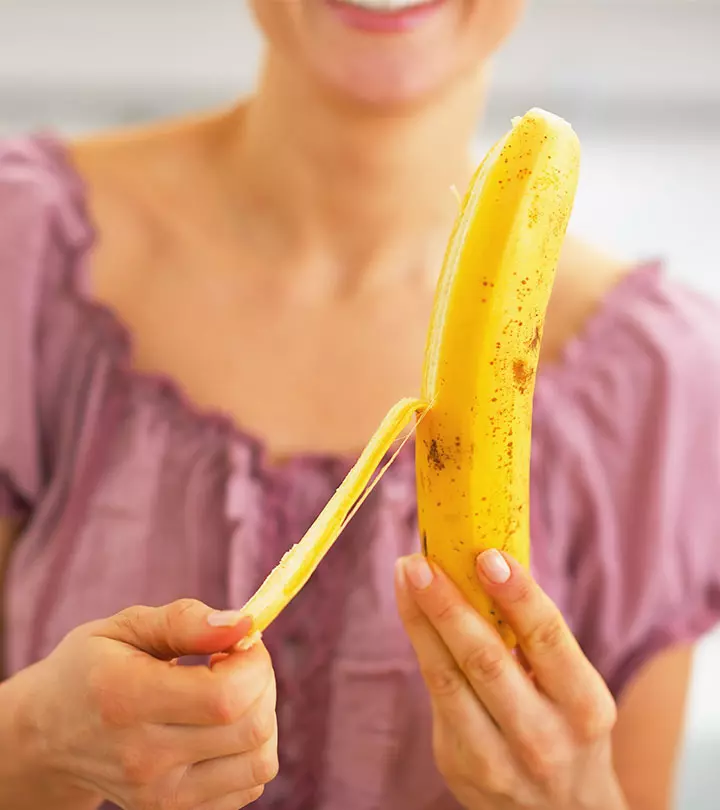
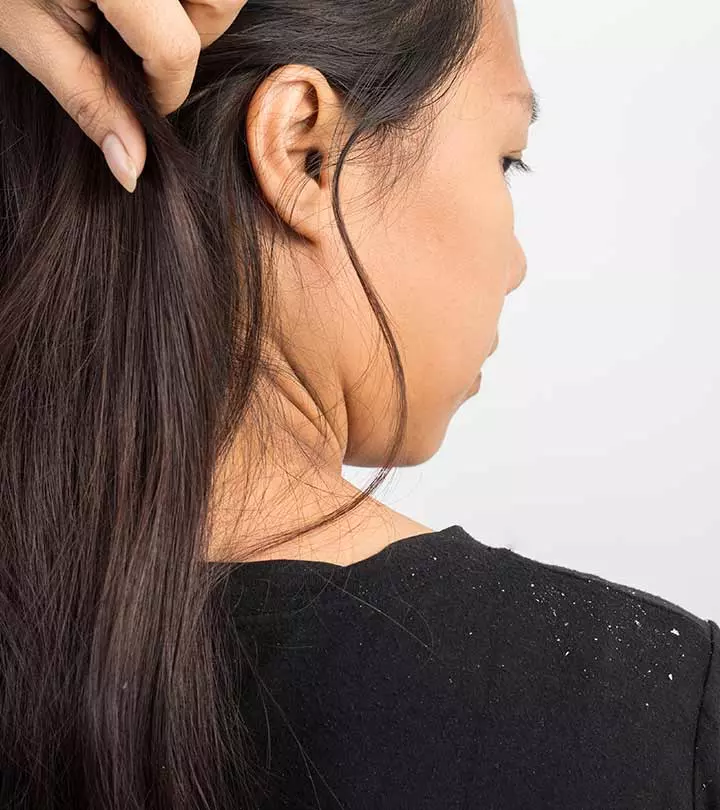
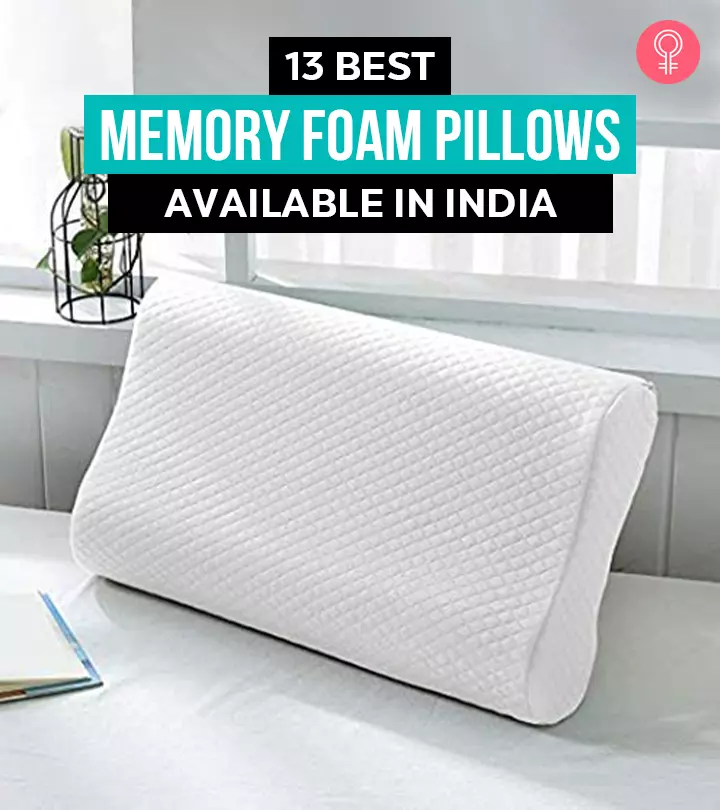
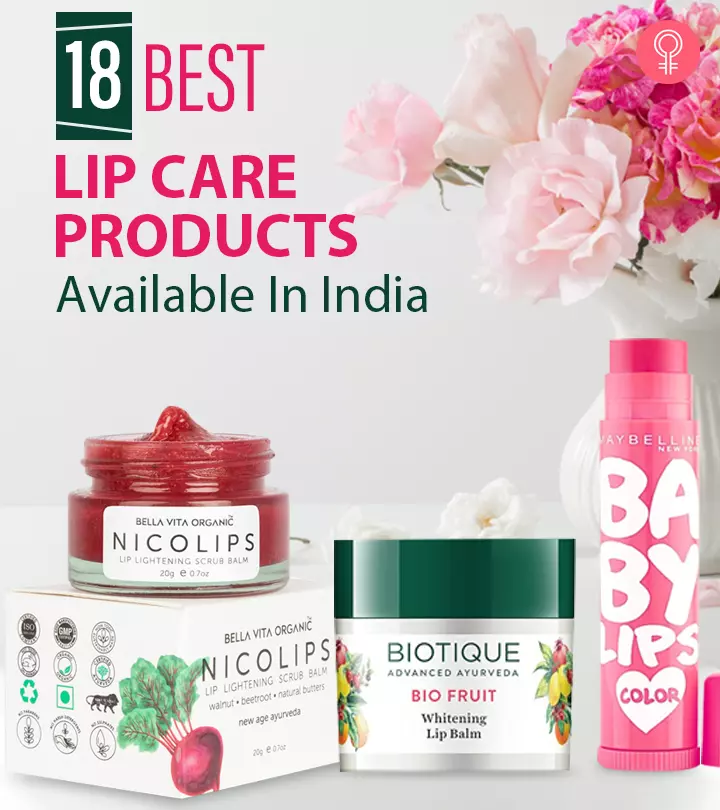
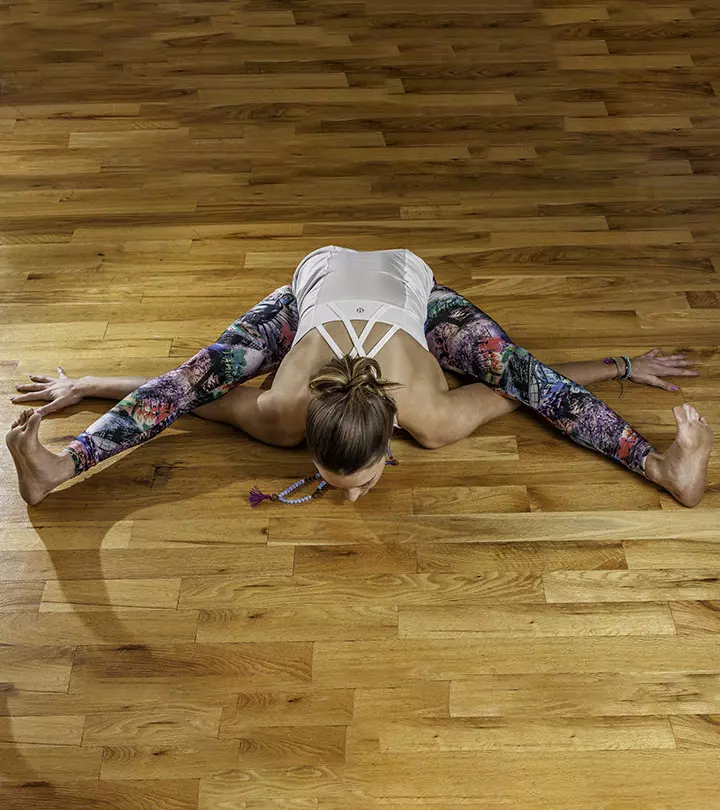
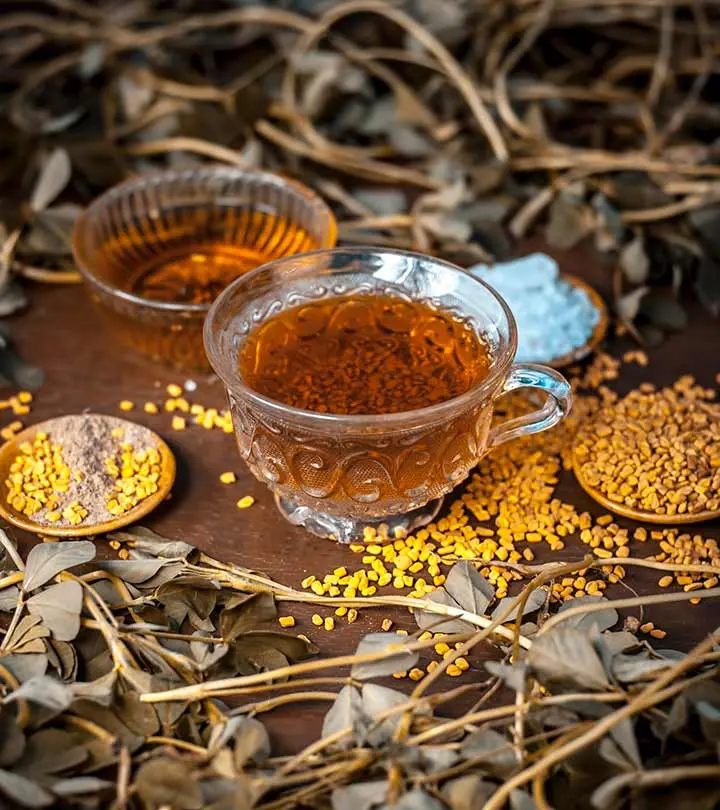

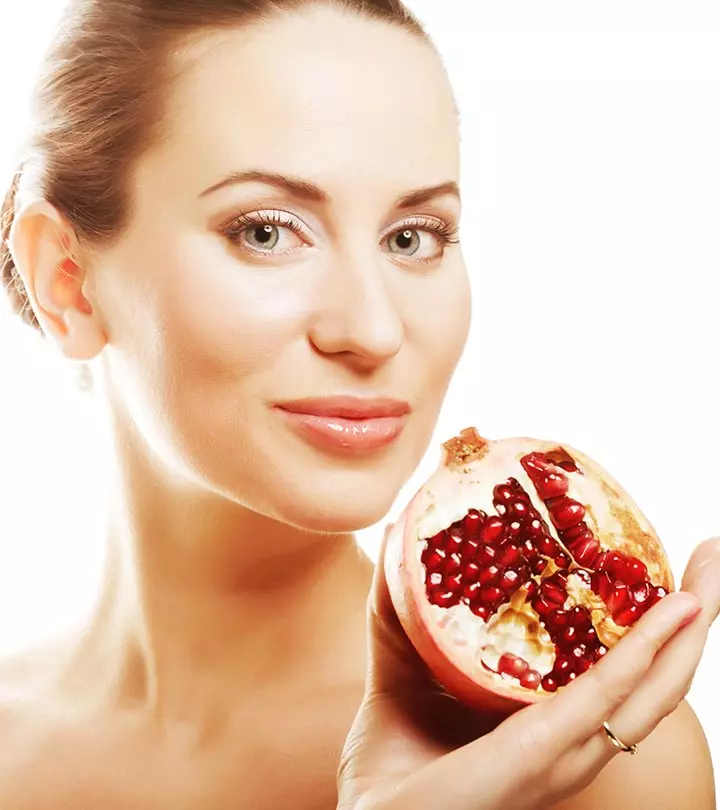
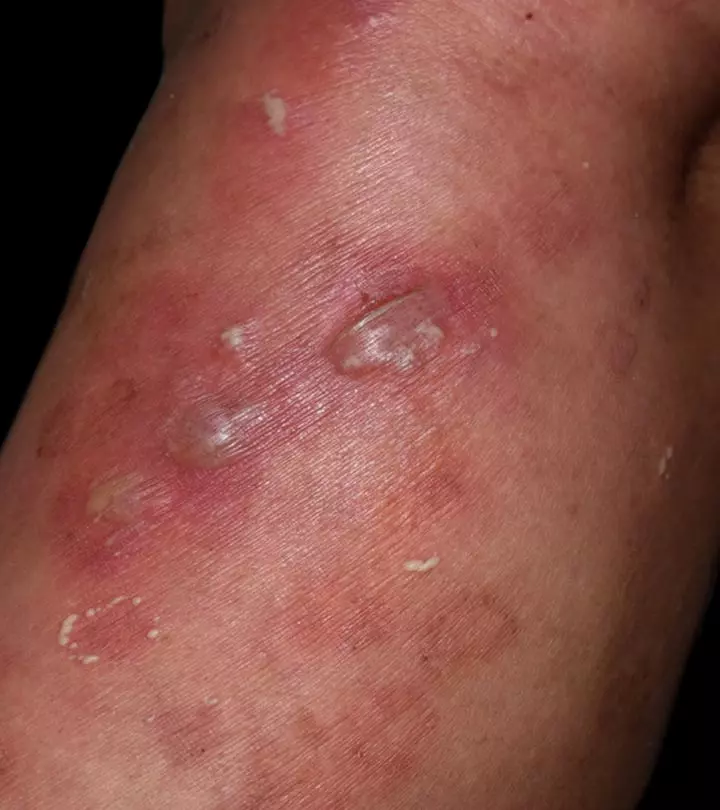
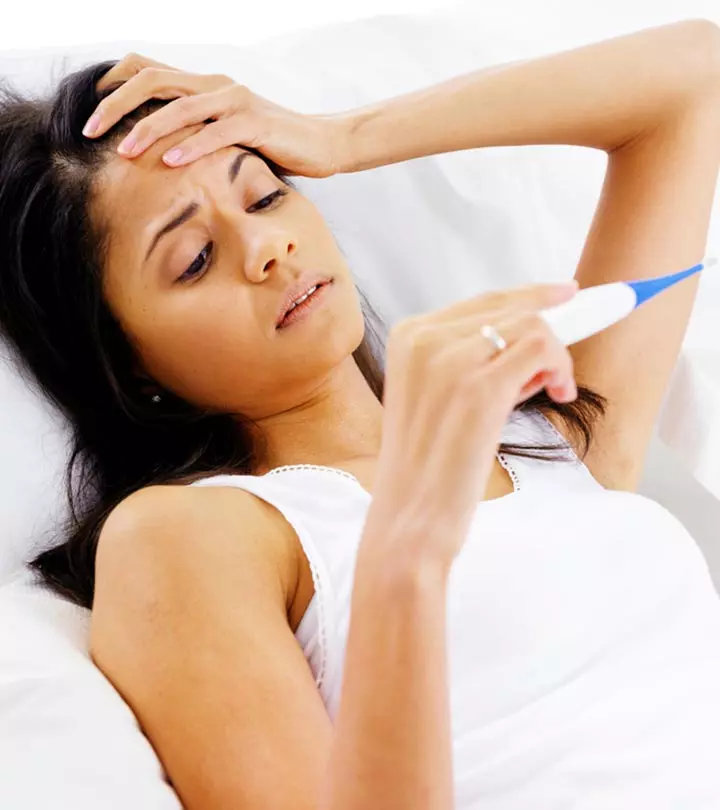
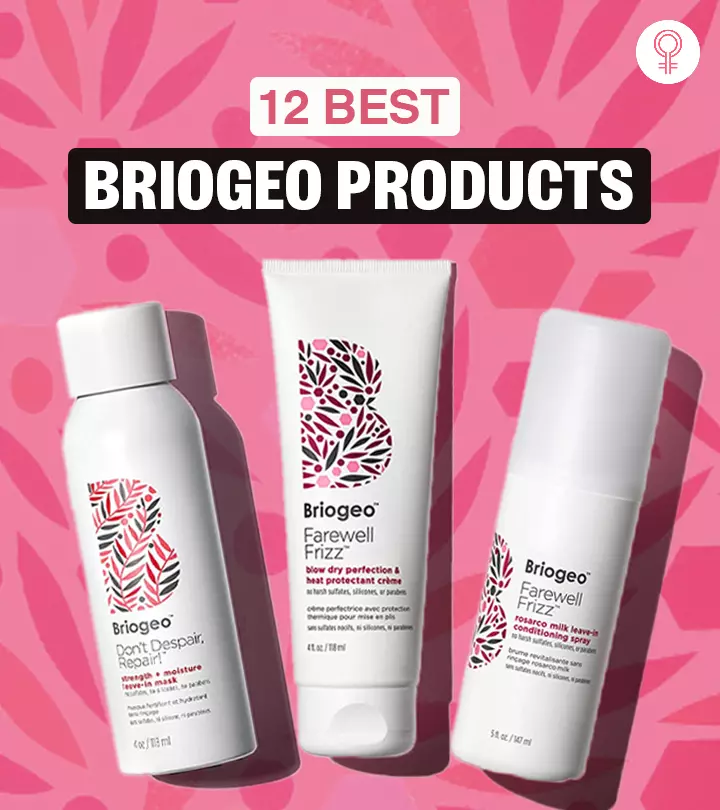
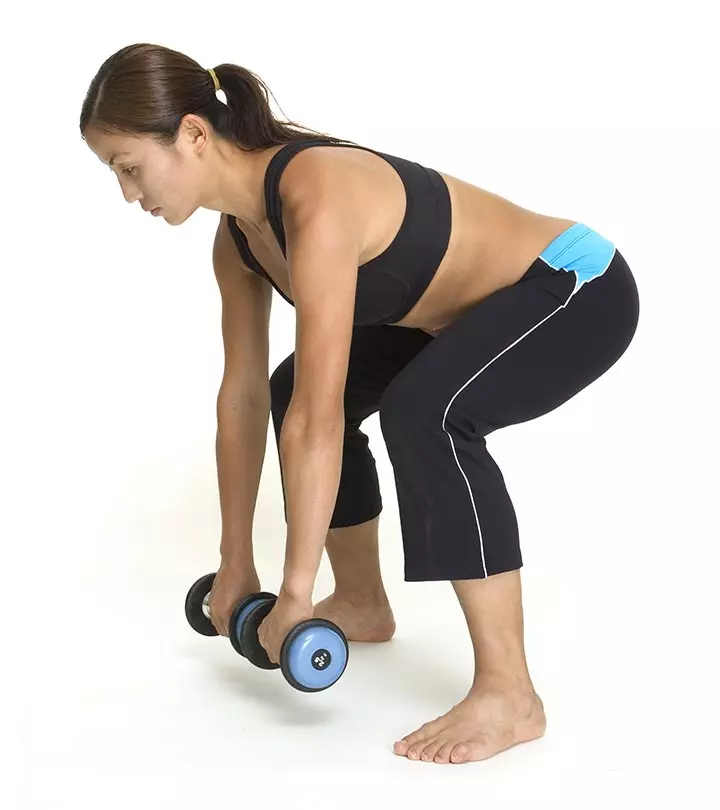

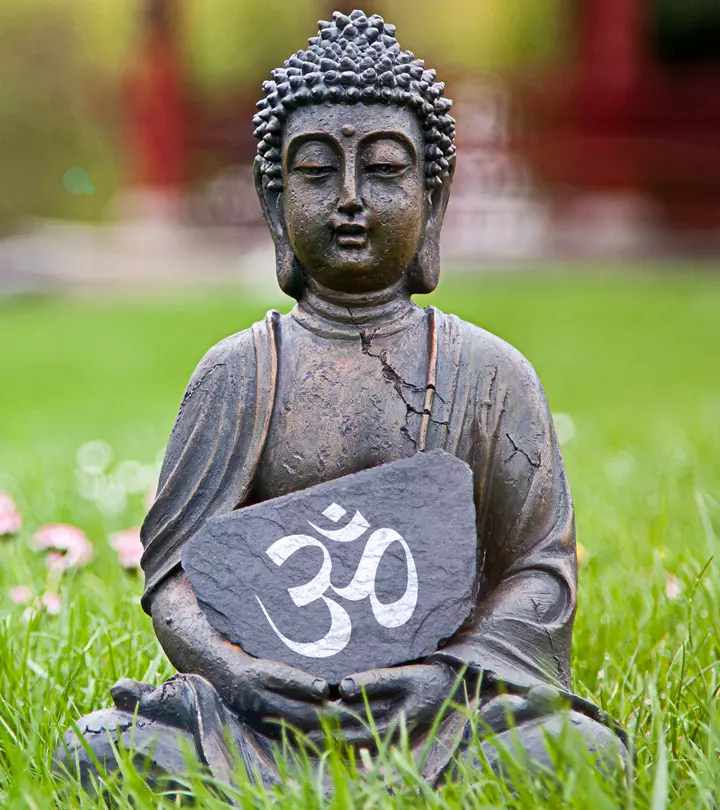
Community Experiences
Join the conversation and become a part of our empowering community! Share your stories, experiences, and insights to connect with other beauty, lifestyle, and health enthusiasts.